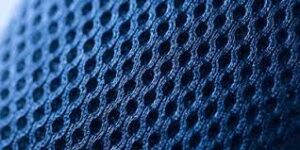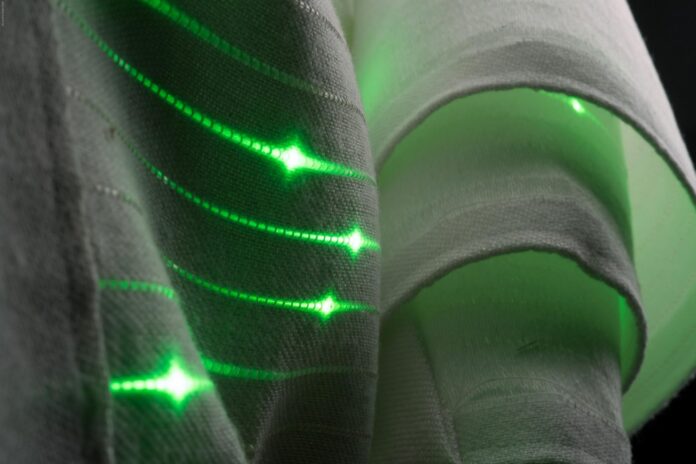“Woven Intelligence: The Intersection of Textile Innovation and Computational Fabrics – Insights from MIT’s Fibers@MIT Research Group”
Greetings, textile aficionados and tech enthusiasts! Today, we’re diving deep into a transformative realm at the intersection of fibers, fabrics, and technology. Prepare to be enthralled as we explore the cutting-edge innovations spearheaded by the brilliant minds at MIT’s Fibers@MIT research group. Their groundbreaking vision is not just reshaping the future of textiles but is catapulting us into an era where our very clothing could become dynamic data-processing entities, fundamentally altering how we interact with the world around us.
Weaving Intelligent Threads: The Concept of Smart Fabrics
Imagine a world where your garments do more than just cover you—they actively participate in monitoring your health, analyzing environmental factors, and even communicating vital information. This isn’t the stuff of science fiction; it’s rapidly becoming a reality thanks to the pioneering work at MIT.

“No human-made objects are more ubiquitous or exposed to more vital data than the clothes we all wear,” remarks doctoral student Gabriel Locke. He raises a fascinating point: what if our fabrics could sense, store, analyze, extract, and communicate useful data captured from our bodies and surroundings?
This vision hinges on creating fabrics embedded with computational capabilities—transforming them into “smart” textiles. But what does this entail, and how close are we to seeing these advancements in our everyday lives?
The Four Pillars of Fabric Computing
In a compelling opinion piece published in the journal *Matter*, members of the Fibers@MIT group outlined a detailed blueprint for what they term “fabric computers.” Here’s a closer look at the four fundamental principles that guide this vision:
1. Advanced Fiber Designs and Fabrication:** As technology evolves, so do the capabilities of fibers. By integrating new material designs and scalable fabrication approaches, single fibers will soon be able to achieve remarkable functionalities. A notable example is thermal fiber drawing, a technique that allows for the precise arrangement of multiple materials within a single fiber, enabling complex functionalities like heart-rate monitoring and optical communication.
2. Synergistic Assembly into Fabrics:** Individual fibers, each brimming with potential, will be ingeniously woven together to create fabrics that capture, store, and process copious amounts of data emitted by our bodies.
3. Artificially Intelligent Fabrics:** By embedding machine learning algorithms, these fabrics will not just collect data but analyze it to uncover hidden patterns and provide meaningful insights. Imagine a shirt that alerts you to subtle changes in your health before you even feel symptoms.
4. Platforms for Value-Added Services:** These computational fabrics will serve as sophisticated platforms offering myriad services. Picture a fabric that tailors its functionalities to the needs of a large population, providing real-time health monitoring, environmental sensing, and more.
Envisioning Moore’s Law for Fabrics
The notion of Moore’s Law—traditionally applied to the doubling of computing power every 18 months—is being reimagined for the realm of fibers. A Moore’s Law for fibers suggests a similar exponential growth in their capabilities. Today’s research is already showing this trend, with fibers capable of diverse functions such as computation and data transmission becoming more common.
For instance, the thermal fiber drawing method has led to innovative material combinations that support functionalities ranging from medical monitoring to interactive communication. One can foresee a future where these computational fabrics are continuously updated, much like how our software receives regular improvements.
Near-Term Milestones on the Road to Fabric Computers
While the long-term vision is ambitious, various near-term milestones are equally captivating. The development of fabric computers will require several key steps:
1. Incorporation of Digital Circuits and Logic Gates:** Similar to the evolution of personal computers, fabrics must integrate digital circuits and logic gates to achieve full computational capabilities. This represents a pivotal first step.
2. Fabric Architectures for Fiber Communication:** The design of fabric architectures that enable fibers to communicate with one another, while still retaining the flexibility and durability of traditional textiles, is essential for the realization of functional smart fabrics.
3. Large-scale Data Collection for AI:** To harness the power of artificial intelligence, these fabrics need to collect extensive data from wearers. Ensuring that sensors are flexible, washable, and efficient will allow them to be worn comfortably for prolonged periods, facilitating continuous data collection.
Revolutionary Implications and Real-World Applications
The potential applications of these innovations are far-reaching. From healthcare to athletic performance, and environmental monitoring to everyday convenience—the implications are truly revolutionary. Imagine athletic wear that optimizes your workout by providing real-time feedback on muscle exertion, or a baby blanket that continuously monitors a newborn’s vital signs.
Moreover, in the context of the current pandemic, the ability to monitor health metrics on a continuous and large-scale basis could provide critical early warnings of disease outbreaks and enable more effective public health responses. This could transform how we manage not only COVID-19 but future health crises.
Challenges and Considerations
Despite the thrilling possibilities, there are nontrivial challenges to overcome. Ensuring that these fabrics are resilient, user-friendly, and cost-effective will be crucial. Addressing privacy concerns related to the massive amounts of personal data collected by smart fabrics is another critical consideration.
The democratization of these technologies—making them accessible to populations across different socioeconomic backgrounds—is also a significant challenge. The question posed by Sanjay Agarwal about the commercial viability of such innovations in countries with lower per capita incomes is particularly pertinent. Addressing these disparities will be vital to ensuring that the benefits of smart textiles are enjoyed universally.
Conclusion: A Fabricated Future Awaits
The future of textiles is not just about new patterns or materials; it’s about embedding intelligence into the very fabric of our lives. What the Fibers@MIT research group is crafting is a vision of a world where our garments are active participants in our daily routines, health, and well-being.
As these advanced fibers transition from the laboratory to the marketplace, they promise to redefine our relationship with our clothing and the myriad data that our bodies and environments continuously generate. From predictive health monitoring to environmental sensing, the boundless potential of smart fabrics is truly a thread worth following.
So, fashion-forward thinkers and tech-savvy enthusiasts, keep an eye on this space. The fabric of our future is being woven today, and it’s one you’ll want to wrap yourselves in tomorrow. Stay tuned to Textile Topher’s blog for more updates on these exciting developments in the world of smart textiles and beyond!
Keywords: Smart Fabrics, MIT’s Fibers@MIT, Fabric Computing, (Post number: 193), Health Monitoring, Data Processing





